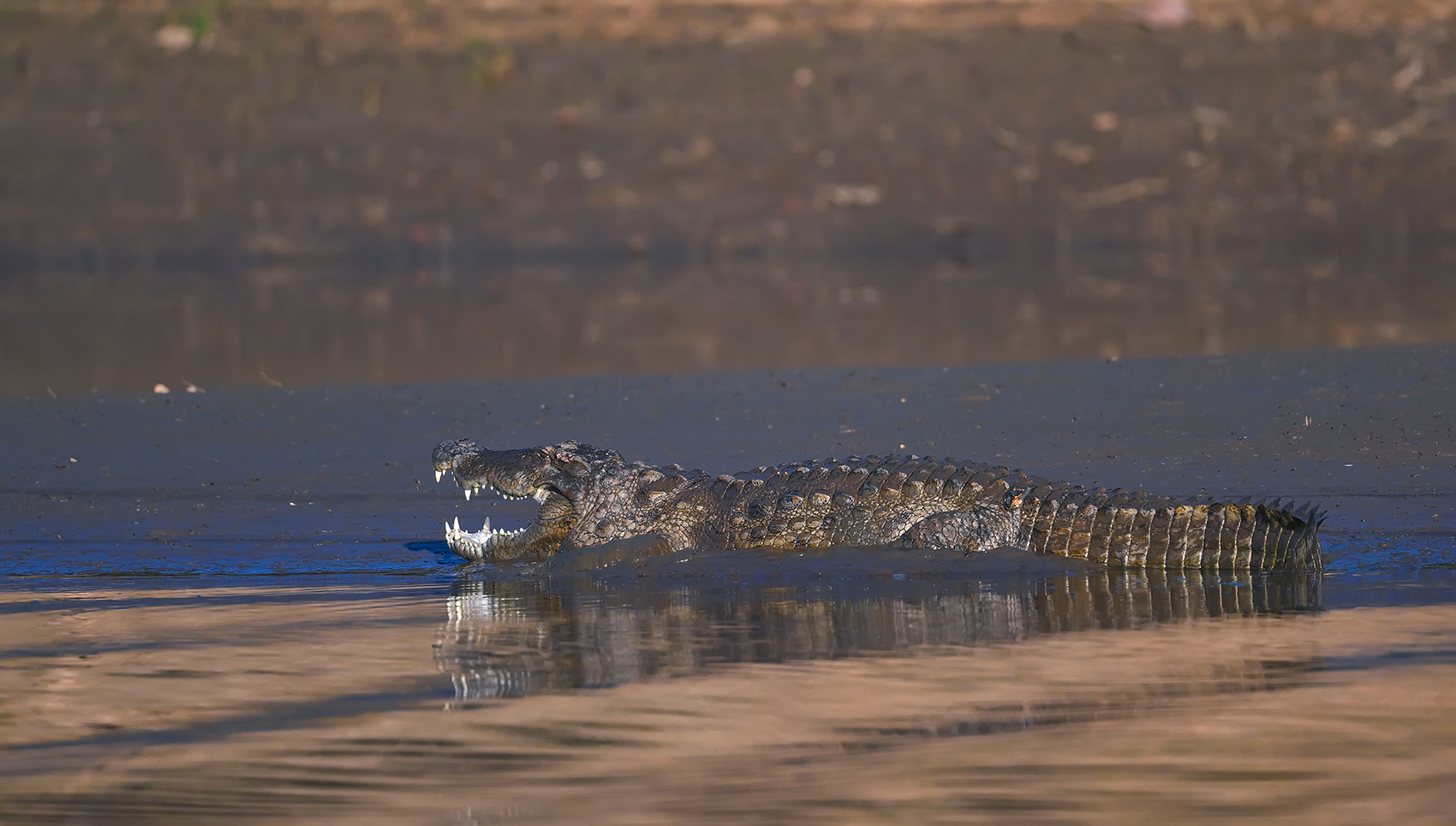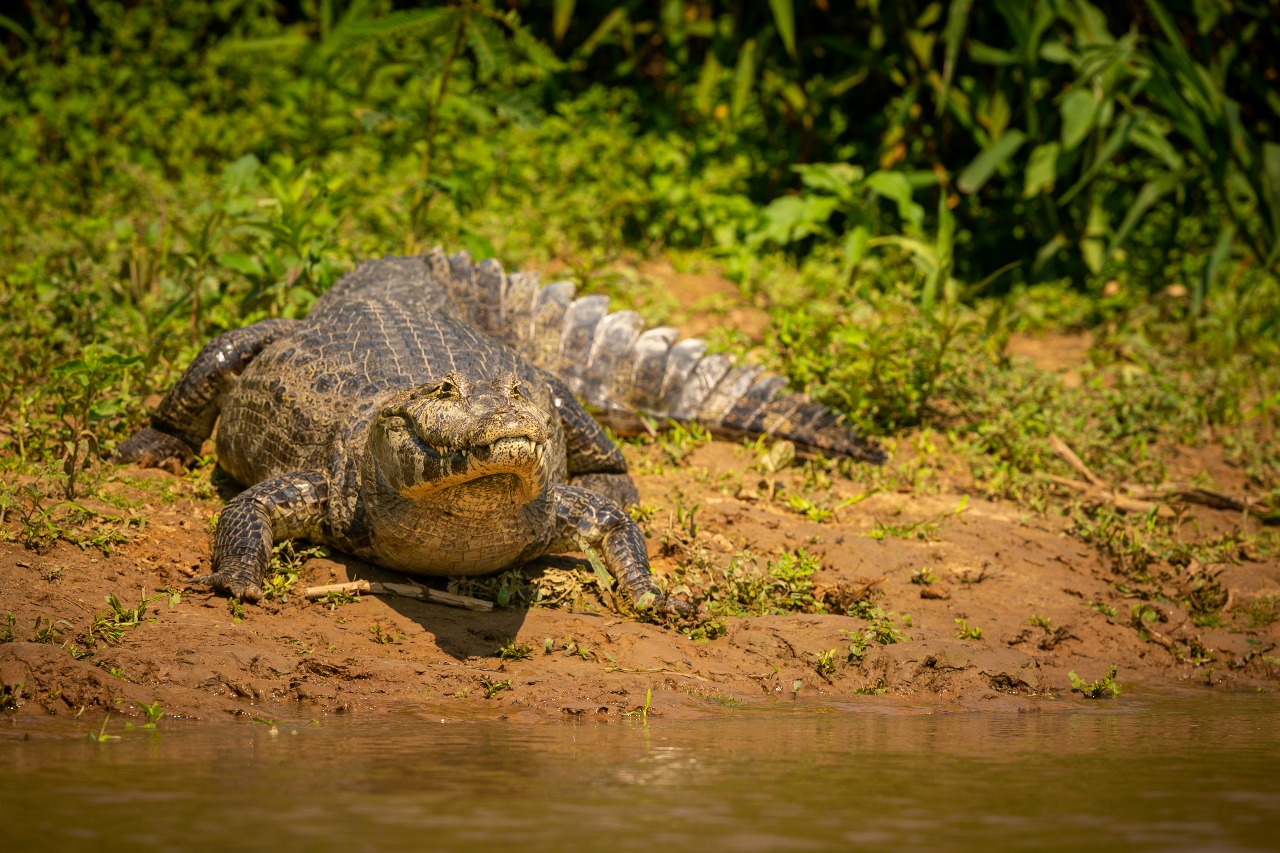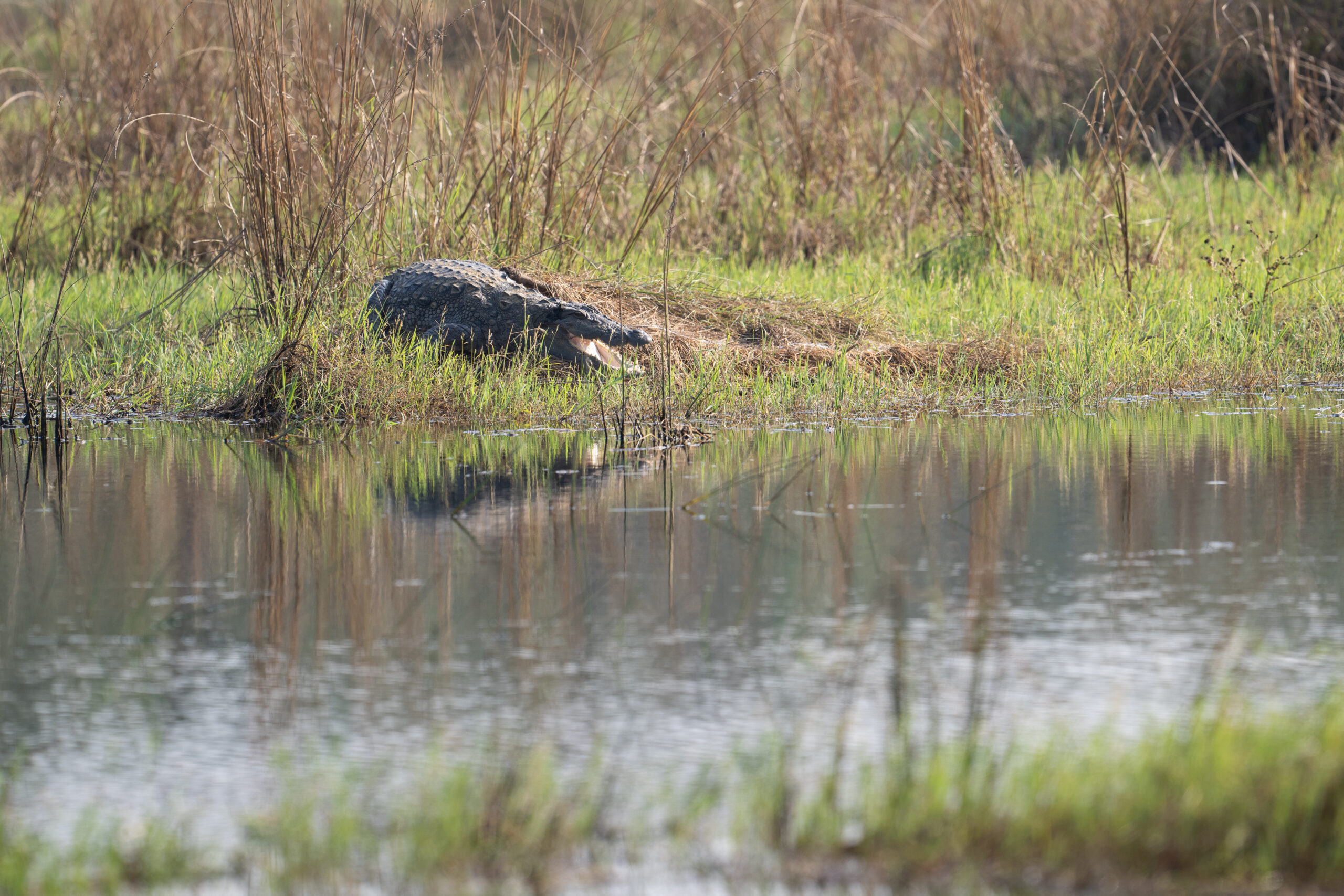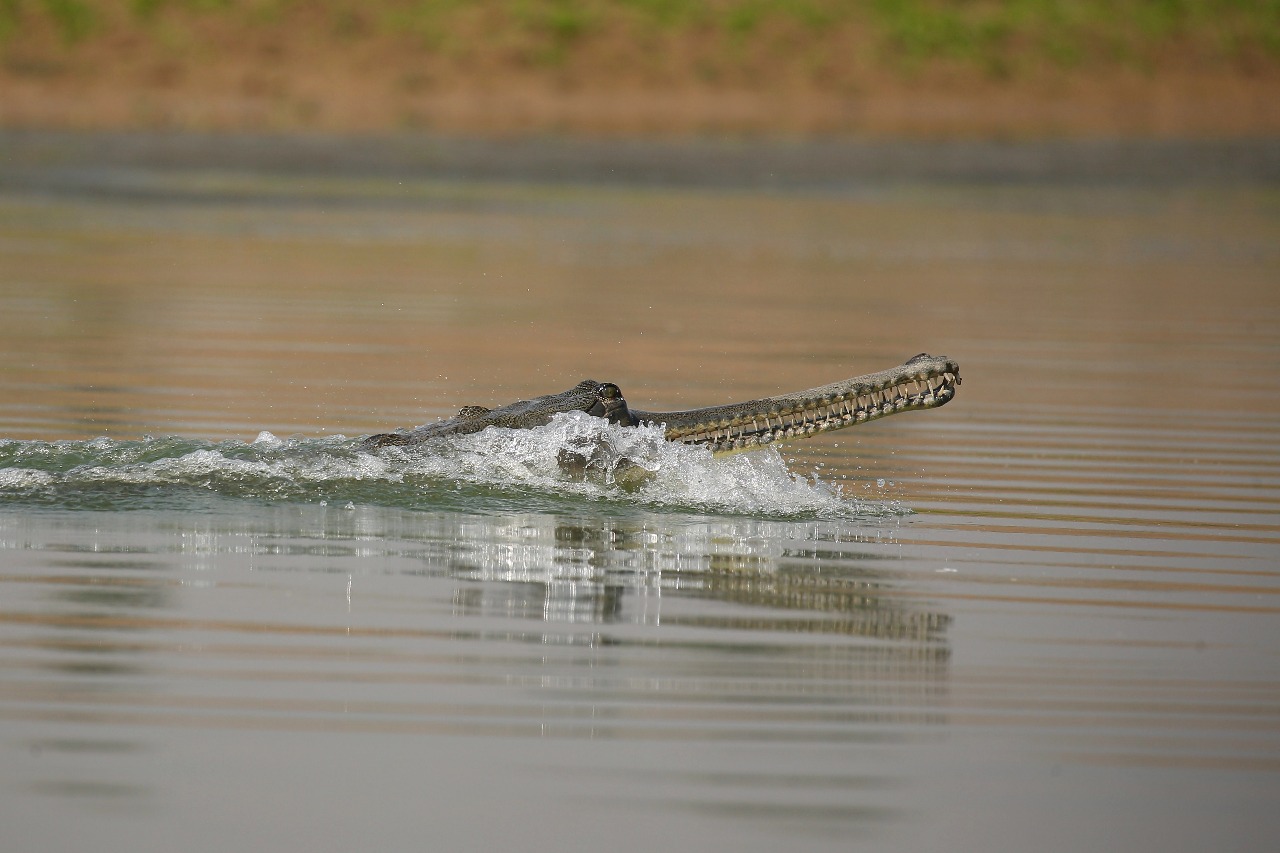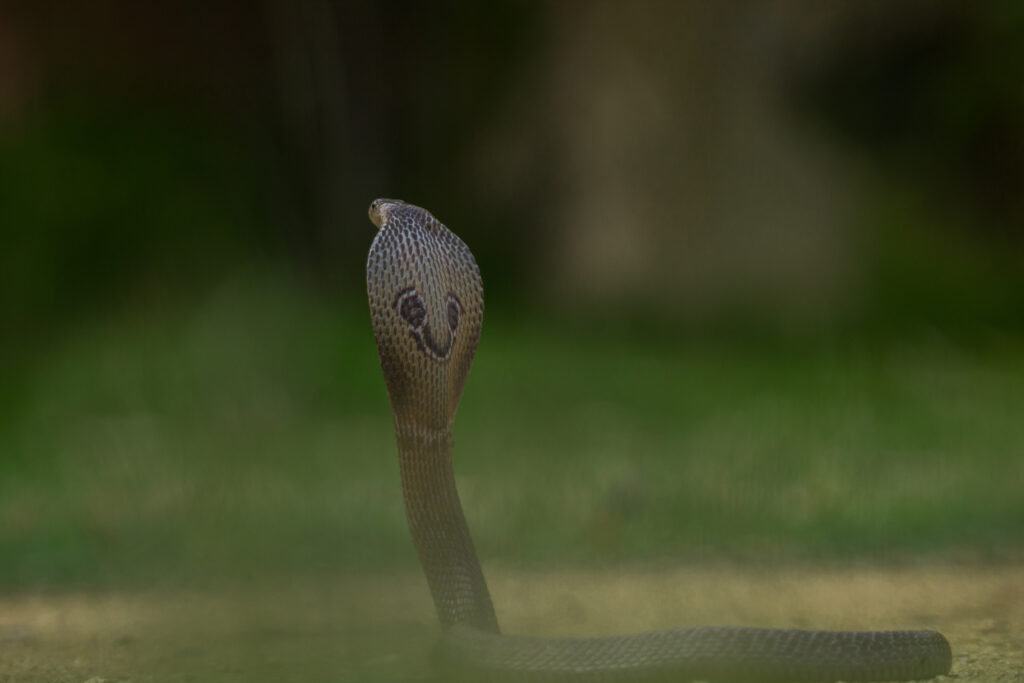India is known for its big cats, like the Bengal tiger but other than that, there are many species that play an important role in different ecosystems. Big cats are on top of the food chain for different terrestrial ecosystems, but we also have a species on top of the food chain of aquatic ecosystems: crocodilian species that have evolved and adapted for millions of years.
India is home to three distinct species of crocodiles, each of which plays a crucial role in its ecosystem: the saltwater crocodile (Crocodylus porosus), the freshwater crocodile (Crocodylus palustris), and the gharial (Gavialis gangeticus).
The Three Crocodile Species of India
1. Saltwater Crocodile (Crocodylus porosus):
- Habitat: Found in estuaries, mangrove forests, river deltas, and brackish waters.
- Size: The largest crocodile species, with males weighing up to 1,000 kg and growingup to 7-8 metres in length.
- Diet: opportunistic feeders, consuming fish, birds, and mammals.
They are also referred to as the estuarine crocodile; it is also the largest reptile in the world, and males can easily weigh up to 1000 kg or more.
2. Freshwater Crocodile (Crocodylus palustris):
- Habitat: Found in freshwater bodies such as rivers, lakes, and marshes.
- Size: Medium-sized, with a length of up to 4-5 metres.
- Diet: Primarily feeds on fish, amphibians, reptiles, and small mammals.
3. Gharial (Gavialis gangeticus):
- Habitat: Found only in freshwater rivers, particularly in the Ganga and its tributaries.
- Size: Smaller compared to the other two species, but can grow up to 7 meters.
- Diet: Feeds primarily on fish.
Gharials endemic to the Indian subcontinent are renowned for their distinctive body structure, characterised by a long, slender snout. Males are particularly notable for the “ghada”—a bulbous growth atop their snout—that gives them their unique name.
What role do Crocodilians play in the Ecosystem?
Crocodilians are both keystone and flagship species and also one of the large-bodied predators in the aquatic ecosystems found in freshwater systems as well as marine systems and estuaries, and these animals being at the top of the food chain play an important role in the ecological processes as well as biogeochemical processes.
They also play a critical role in maintaining the health of aquatic ecosystems. As apex predators, they regulate the populations of smaller animals, helping to maintain a balanced food chain.
Additionally, the burrows created by crocodiles for nesting serve as sanctuaries for many other species, enhancing biodiversity.
Threats :
The populations of these species are experiencing significant declines due to poaching, driven by the demand for exotic skins and meat. Illegal hunting practices have resulted in drastic reductions in numbers, while habitat destruction, fuelled by expanding human activities, has led to the fragmentation or complete loss of natural habitats. Additionally, water pollution from agricultural runoff, industrial discharge, and waste disposal poses serious risks to wildlife health and the integrity of their habitats.
Moreover, competition from invasive species presents a substantial threat. For instance, feral dogs not only compete for resources but also prey on these species, targeting eggs and juveniles.
The gharial, a critically endangered species, exemplifies the convergence of these threats. In addition to poaching and habitat degradation, gharials are facing unique challenges from sand mining activities that disrupt their nesting sites along riverbanks.
One of the most frequently asked questions about crocodiles –
Difference between crocodiles and alligators :
|
Crocodiles |
Alligators |
|
Belong to the family – Crocodylidae |
Belong to the family – Alligatoridae |
|
Crocodile are much more larger in size |
Smaller in size as compared to crocodiles |
|
Snout is narrow and V Shaped |
Snout is broad and U shaped |
|
When the mouth is closed the lower teeth are visible |
When the mouth is closed the lower teeth are not visible |
|
Found in both Saltwater and freshwater |
Found in freshwater |
Interesting Facts About Crocodiles
- Palatal Valve: Crocodiles possess a unique palatal valve located on the roof of their mouth. This valve prevents water from entering their airways when submerged, allowing them to keep their mouths open underwater to capture prey.
- Sensory Organs: Crocodiles have specialized sensory organs on their faces that can detect touch, heat, cold, and chemicals in their environment, even when only small movements occur in the water. This is crucial for hunting, as it helps them detect potential prey.
- Opportunistic Feeders: While crocodiles primarily consume fish and amphibians, they have been known to hunt small mammals such as deer and even steal prey from larger predators like tigers.
Conclusion :
Even though crocodiles may be often ignored in the thrill of encountering a charming animal like a tiger, they play an equally important role in the ecosystem and are many times even referred to as ecosystem engineers; hence it is very important for the masses to become much more aware of how each and every organism contributes to the environment, and with the increased anthropogenic activities as well as the increasing population, it is necessary that the future generations become well informed even about the minute details all around them that can also help us protect our future.
Written by Ms. Divyajit Kaur Bal
Wildlife conservationist passionate about nature, people, and exploration.
References :
- https://www.britannica.com/story/whats-the-difference-between-alligators-and-crocodiles
- Mazzotti, F. J., Best, G. R., Brandt, L. A., Cherkiss, M. S., Jeffery, B. M., & Rice, K. G. (2009). Alligators and crocodiles as indicators for restoration of Everglades ecosystems. Ecological indicators, 9(6), S137-S149.
- Panda, A. K., Katdare, S., Gawan, S., Sharma, S. P., Badola, R., & Hussain, S. A. (2023). Population status and factors influencing the distribution of Critically Endangered gharial (Gavialis gangeticus) in a regulated unprotected river system in India. Global Ecology and Conservation, 46, e02547.
- Soares, D. (2002). An ancient sensory organ in crocodilians. Nature, 417(6886), 241-242.
- Somaweera, R., Nifong, J., Rosenblatt, A., Brien, M. L., Combrink, X., Elsey, R. M., … & Webber, B. L. (2020). The ecological importance of crocodylians: towards evidence‐based justification for their conservation. Biological Reviews, 95(4), 936-959.

